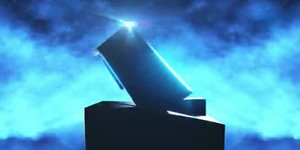Larrabee is Intel’s entry into discrete graphics
September 19, 2007 | 00:26

Intel CEO Paul Otellini said this morning that he intends to be able to demonstrate the capabilities of “Larrabee” in 2008.
Larrabee is “a highly parallel, many core product comprised of an array of Intel architecture cores,” said Otellini. He then went onto explain that this will indeed be a discrete graphics processor.
“We’ll deliver teraflops of performance with this chip. And one of the things that we think is a unique advantage is that it will scale easily for software developers.”
Intel says it’ll be easy for developers to adopt because it has code compatibility with everything developers are familiar with in the Intel architecture. Larrabee will use a shared cache and that’s something Otellini believes will help to make it easy for the development community to embrace.
Otellini believes Larrabee has applications in supercomputing, in financial services, and physics and health applications. Most importantly, Otellini also stated that Larrabee would be very good at graphics.
With Intel’s recent acquisition of Havok, one can’t but help feel that GPU physics just died overnight, because the company behind that technology was Havok. If you add this to the fact that Ageia is struggling to sell discrete physics accelerators and you’ve got a situation where there is only one winner in the physics war.
Because of Larrabee’s massive parallelism, middleware companies like Havok will benefit from many cores. Jeff Yates, vice president of product management at Havok, told attendees that multi-core is “very critical” for physics.
“It's very critical, actually, because most of these creative types are going after reality and immersive interactive experiences,” said Yates. “And the kind of compute power needed for that is almost insatiable. Quite often, if you want to have thousands of objects interacting, debris, dust, and sometimes bodies flying around, you need as much compute power as you can get.”
Discuss in the forums
Larrabee is “a highly parallel, many core product comprised of an array of Intel architecture cores,” said Otellini. He then went onto explain that this will indeed be a discrete graphics processor.
“We’ll deliver teraflops of performance with this chip. And one of the things that we think is a unique advantage is that it will scale easily for software developers.”
Intel says it’ll be easy for developers to adopt because it has code compatibility with everything developers are familiar with in the Intel architecture. Larrabee will use a shared cache and that’s something Otellini believes will help to make it easy for the development community to embrace.
Otellini believes Larrabee has applications in supercomputing, in financial services, and physics and health applications. Most importantly, Otellini also stated that Larrabee would be very good at graphics.
With Intel’s recent acquisition of Havok, one can’t but help feel that GPU physics just died overnight, because the company behind that technology was Havok. If you add this to the fact that Ageia is struggling to sell discrete physics accelerators and you’ve got a situation where there is only one winner in the physics war.
Because of Larrabee’s massive parallelism, middleware companies like Havok will benefit from many cores. Jeff Yates, vice president of product management at Havok, told attendees that multi-core is “very critical” for physics.
“It's very critical, actually, because most of these creative types are going after reality and immersive interactive experiences,” said Yates. “And the kind of compute power needed for that is almost insatiable. Quite often, if you want to have thousands of objects interacting, debris, dust, and sometimes bodies flying around, you need as much compute power as you can get.”
Discuss in the forums

MSI MPG Velox 100R Chassis Review
October 14 2021 | 15:04








Want to comment? Please log in.